Topics 2014
December 2014
Dec. 25, 2014 Updated
APRSAF-21 successfully held in Tokyo
|
The 21st session of the Asia-Pacific Regional Space Agency Forum (APRSAF-21) was successfully held from December 2 to 5, 2014 at the National Museum of Emerging Science and Innovation (Miraikan) and the Tokyo International Exchange Center (Plaza Heisei), jointly organized by the Ministry of Education, Culture, Sports, Science and Technology of Japan (MEXT) and the Japan Aerospace Exploration Agency (JAXA).
|

|
|---|
Dec. 5, 2014 Updated
Hayabusa2 flying smoothly!
|
JAXA confirmed the completion of a sequence of the important operations
for the Hayabusa2 mission. With this confirmation, the critical
operation phase of the Hayabusa2 was completed. |
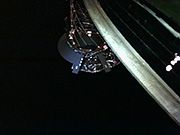
|
|---|
Dec. 3, 2014 Updated
"Hayabusa2" successfully launched!
|
H-IIA F26 with the Asteroid Explorer "Hayabusa2" onboard launched at 1:22:04 p.m. on Dec 3, 2014 (JST) from the Tanegashima Space Center.
|

|
|---|
November 2014
Nov. 30, 2014 Updated
"Hayabusa2" Launch date was rescheduled. The launch time on Dec. 3 (Wed.) will be at 1:22:04 p.m. (JST.)
|
Mitsubishi Heavy Industries, Ltd. and JAXA have decided to postpone the launch of "Hayabusa2" and piggyback payloads by the H-IIA F26 to 1:22:04 p.m. on Dec 3 (Wed. JST).
|
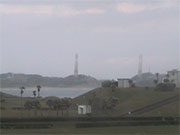
|
|---|
Nov. 29, 2014 Updated
"Hayabusa2" Launch rescheduled to 1:22:43 p.m. on December 1 (Mon.) 2014
|
The launch of the Asteroid Explorer "Hayabusa2" and three micro
piggyback payloads by the H-IIA Launch Vehicle No. 26 was rescheduled
at 1:22:43 p.m. on December 1 (Mon. Japan Standard Time, JST) after
carefully studying the weather conditions.
|
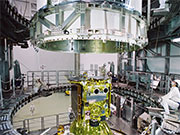
|
|---|
Nov. 28, 2014 Updated
Hayabusa2 launch postponement
|
H-IIA Launch Vehicle No.26 with the Asteroid Explorer "Hayabusa2"
onboard has been rescheduled as clouds including a freezing layer that
exceeds the restrictions for suitable weather are forecast to be
generated at around the scheduled launch time on November 30 (Sun.),
2014 (Japan Standard Time.) |
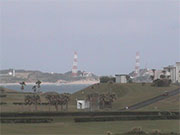
|
|---|
Nov. 25, 2014 Updated
APRSAF-21 to be held in Japan
|
The 21st Asia-Pacific Regional Space Agency Forum (APRSAF-21) will be
held at the National Museum of Emerging Science and Innovation
(Miraikan) and the Tokyo International Exchange Center (both in Tokyo)
between December 2 (Tue.) and 5 (Fri.) 2014. |

|
|---|
Nov. 13, 2014 Updated
New movie "JAXA -Explore to Realize-"
|
The new video clip titled "JAXA -Explore to Realize-" was uploaded to the YouTube.
|

|
|---|
October 2014
Oct. 8, 2014 Updated
TRMM/PR completed the post-mission operation
|
The Precipitation Radar (PR) aboard the Tropical Rainfall Measuring Mission (TRMM) satellite completed its post-mission operation on October 7, 2014 (UTC.) The TRMM has been in its 17th year of operation, well exceeding its design life expectancy of three years and two months. |
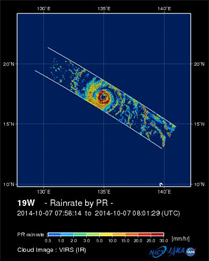
|
|---|
Oct. 7, 2014 Updated
"Himawari-8" lifted off for space! Launch Success of H-IIA F25.
|
The H-IIA Launch Vehicle No. 25 with the Geostationary Meteorological Satellite "Himawari-8" onboard lifted off at 2:16 p.m. on October 7, 2014 (Japan Standard Time) from the Tanegashima Space Center. |

|
|---|
Oct. 6, 2014 Updated
H-IIA F25/Himawari-8 Launch Time
|
The launch time of the H-IIA Launch Vehicle No. 25 was set at 2:16:00 p.m. on October 7. The live launch report through the Internet will start from 1:45 p.m. on the same day from the Tanegashima Space Center. |

|
|---|
September 2014
Sep. 30, 2014 Updated
New voyager to travel deep into space! Hayabusa2 to be launched on Nov. 30
|
The launch date and time for the H-IIA Launch Vehicle No. 26 (H-IIA F26) with the Asteroid Explorer "Hayabusa2" onboard was decided to be at 1:24:48 p.m. on November 30 (Sunday), 2014 (Japan Standard Time)*. |

|
|---|
Sep. 2, 2014 Updated
Public Data Release of the GPM Core Observatory.
|
JAXA has started public data release of the Global Precipitation Measurement (GPM) Core Observatory, which is jointly developed with the National Aeronautics and Space Administration (NASA), since September 2, 2014. The GPM Core Observatory is focused on precipitation observation from space, and carrying the Dual-frequency Precipitation Radar (DPR) developed by Japan. |

|
|---|
August 2014
Aug. 11, 2014 Updated
First Image Data Acquisition by CIRC onboard DAICHI-2
|
Compact Infrared Camera (CIRC) is a technology demonstration payload onboard the DAICHI-2. CIRC is an infrared sensor intended for observing
forest fires, volcanoes, and heat island phenomena. |
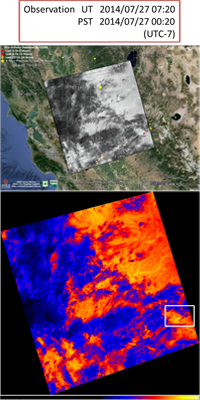
|
|---|
Aug. 7, 2014 Updated
H-IIA F25 with Himawari-8 onboard to be launched on Oct. 7
|
The launch schedule of the H-IIA Launch Vehicle No. 25 (H-IIA F25) has been decided to be between 2:16 thru 6:16 p.m. on Oct. 7 (Tue), 2014 (Japan Standard time). The launch will be performed by Mitsubishi Heavy Industries and JAXA. |

|
|---|
June 2014
Jun. 27, 2014 Updated
First Image Data from "DAICHI-2" (ALOS-2)
|
JAXA acquired images from the PALSAR-2 aboard the "DAICHI-2" (ALOS-2). |
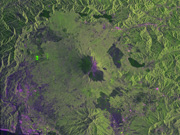
|
|---|
Jun. 4, 2014 Updated
IKAROS wakes up from hibernation mode for third time
|
The IKAROS seemed to wake up from its hibernation mode in mid April, and JAXA searched for it based on its attitude and orbit prediction to receive its radio waves. On May 22 (Thu.), we successfully found the IKAROS, which is flying at a distance of about 230 million kilometers from the Earth. We will continue to receive data from the IKAROS until mid June to confirm its condition and analyze the information. |
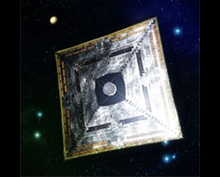
|
|---|
May 2014
May 27, 2014 Updated
DAICHI-2 critical operation phase successfully completed! Initial function verification starts!
|
The DAICHI-2 launched from the Tanegashima Space Center on May 24 performed important tasks including L-band synthetic aperture radar deployment after its injection into the orbit, thus its critical operation phase was successfully completed. |
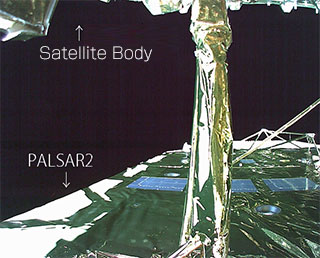
|
|---|
May 24, 2014 Updated
Successful launch of H-IIA F 24 with DAICHI-2 (ALOS-2)!
|
The launch of the H-IIA Launch Vehicle No. 24 with The Advanced Land Observing Satellite-2 "DAICHI-2" (ALOS-2) aboard was successfully performed at 12:05:14 p.m. on May 24 (Sat.) 2014 (Japan Standard Time). |
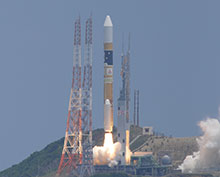
|
|---|
May 22, 2014 Updated
DAICHI-2/H-IIA F24 to be launched soon! Live broadcast from 11:15 a.m. on May 24 (Sat.)
|
The launch time of the H-IIA Launch Vehicle No. 14 (H-IIA F14) with the
DAICHI-2 onboard was set for 12:05:14 p.m. on May 24 (Sat.) 2014 (Japan
Standard Time). |
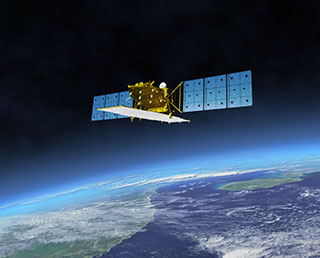
|
|---|
May 14, 2014 Updated
"Welcome home Astronaut Wakata!" Safe return to Earth
|
The Soyuz spacecraft (TMA-11M/32S) with three crewmembers including Astronaut Wakata onboard safely landed in the Republic of Kazakhstan at 10:58 a.m. on May 14 (Wed.)
|
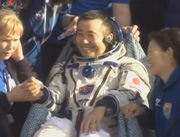
|
|---|
May 12, 2014 Updated
Astronaut Wakata returning to Earth!
|
Astronaut Wakata is returning to the Earth at around 10:58 a.m. on May 14 after completing his long stay at the International Space Station (ISS) for about six months. |

|
|---|
April 2014
Apr. 23, 2014 Updated
JAXA English website renewal
|
JAXA’s English website was renewed on April 22 (Tue.) with a complete new design.
|

|
|---|
March 2014
Mar. 25, 2014 Updated
First Images Available from JAXA-NASA Global Rain and Snowfall Satellite
|
JAXA and the NASA have released the first images captured by their newest Earth-observing satellite, GPM Core Observatory, which launched into space Feb. 28 (JST). |

|
|---|
Mar. 14, 2014 Updated
Launch date set for DAICHI-2 on H-IIA F24!
|
The launch date and time for the H-IIA Launch Vehicle No. 24 (H-IIA F24) with the Advanced Land Observing Satellite-2 "DAICHI-2" (ALOS-2) onboard was decided to be at around 12:05 p.m. thru 12:20 p.m. (JST) on May 24 (Sat.,) 2014 (Japan Standard Time.) |
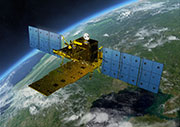
|
|---|
Mar. 9, 2014 Updated
Astronaut Wakata's Assumption of the ISS Commander
|
Astronaut Wakata Koichi, who is in his long-duration stay on board the ISS, has succeeded Russian cosmonaut Oleg Kotov and become the 39th ISS Commander on March 9, 2014. |

|
|---|
Mar. 7, 2014 Updated
Live broadcast of Astronaut Wakata's inauguration as ISS commander from 5:25 pm. on March 9 (JST)
|
Astronaut Koichi Wakata, who is on a long-duration stay as a flight engineer for the 38th expedition mission aboard the International Space Station (ISS), will assume the post of ISS commander for Expedition 39 on March 9. Astronaut Wakata will be the first Japanese ISS commander. JAXA will broadcast his inauguration ceremony live through the Internet. The program will mainly relay the live ceremony scene from NASA TV while reviewing his past achievements and introducing future missions. |

|
|---|
February 2014
Feb. 28, 2014 Updated
Successful launch of H-IIA F 23 with GPM core ovservatory aboard!
|
The launch of the H-IIA Launch Vehicle No. 23 with the core observatory for the Global Precipitation Measurement mission aboard was successfully performed at 3:37 a.m. on February 28 (Fri.) 2014 (JST). |

|
|---|
Feb. 26, 2014 Updated
GPM/H-IIA F23 launch time decided! Live broadcast from 2:50 a.m. on Feb. 28 (Fri.) (JST)
|
The launch time of the H-IIA Launch Vehicle No. 23 with the core observatory for the Global Precipitation Measurement mission onboard was set for 3:37:00 on February 28 (Fri.), 2014 (Japan Standard Time). Live BroadcastGPM/H-IIA F23 Launch: from 2:50 a.m. on February 28 (Fri, JST) (for 70 min)
* The above broadcast schedule is subject to change due to preparations and other factors such as weather. |

|
|---|
Feb. 21, 2014 Updated
GPM core observatory Live Launch Broadcast to start at 2:20 a.m. on Feb. 28
|
The GPM core observatory will be launched sometime between 3:07 a.m. and 5:07 a.m. on February 28 (Fri.), 2014 (Japan Standard Time). |

|
|---|
January 2014
Jan. 17, 2014 Updated
GPM core observatory revealed to the media
|
On January 17 (Fri.), the GPM core observatory was shown to the media in the Spacecraft Test and Assembly Building 2 (STA2) at the Tanegashima Space Center (TNSC). |
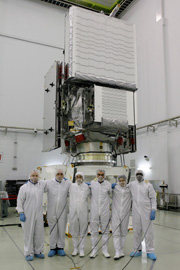
|
|---|